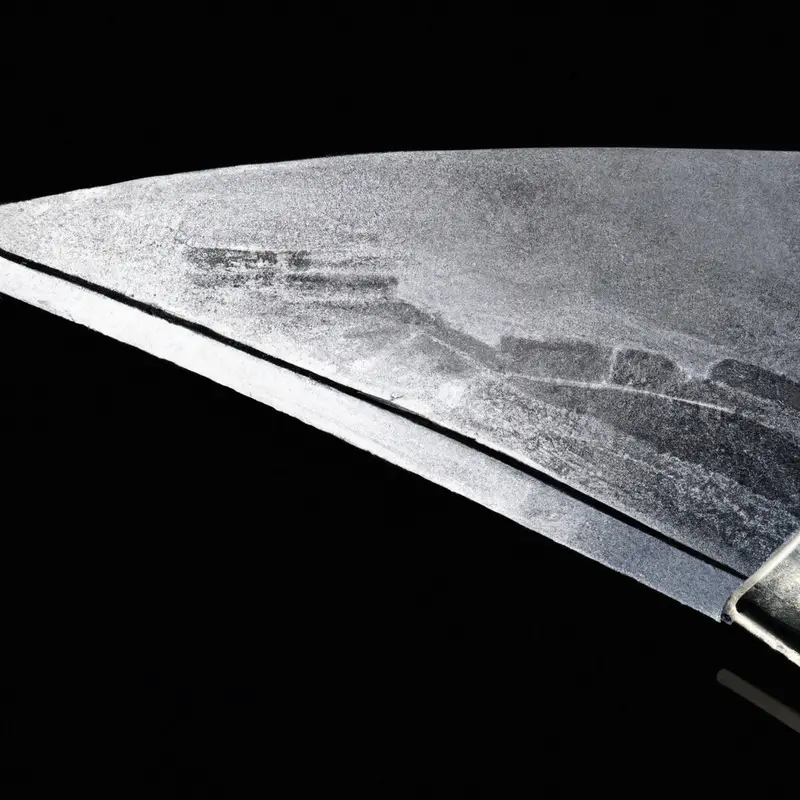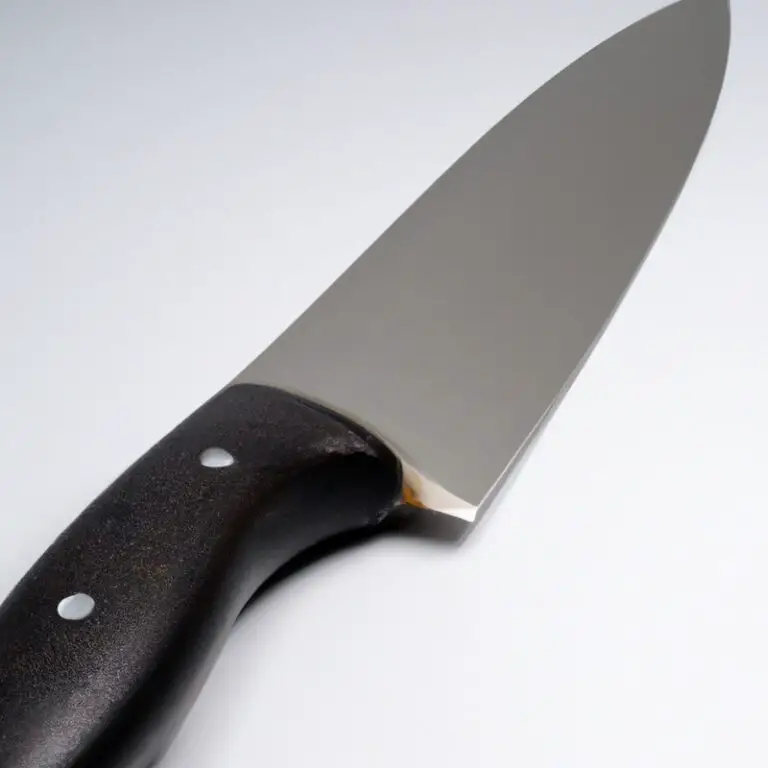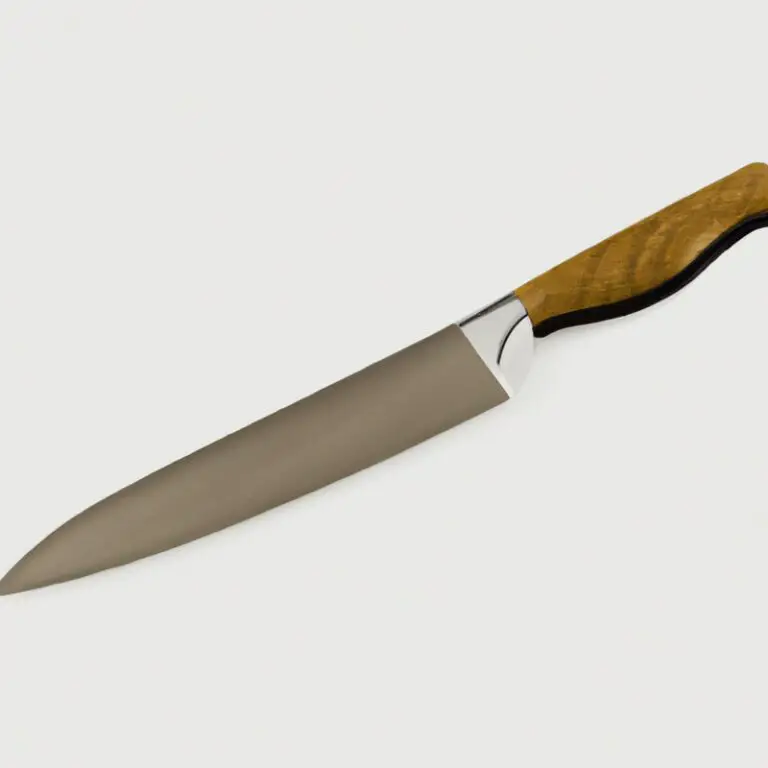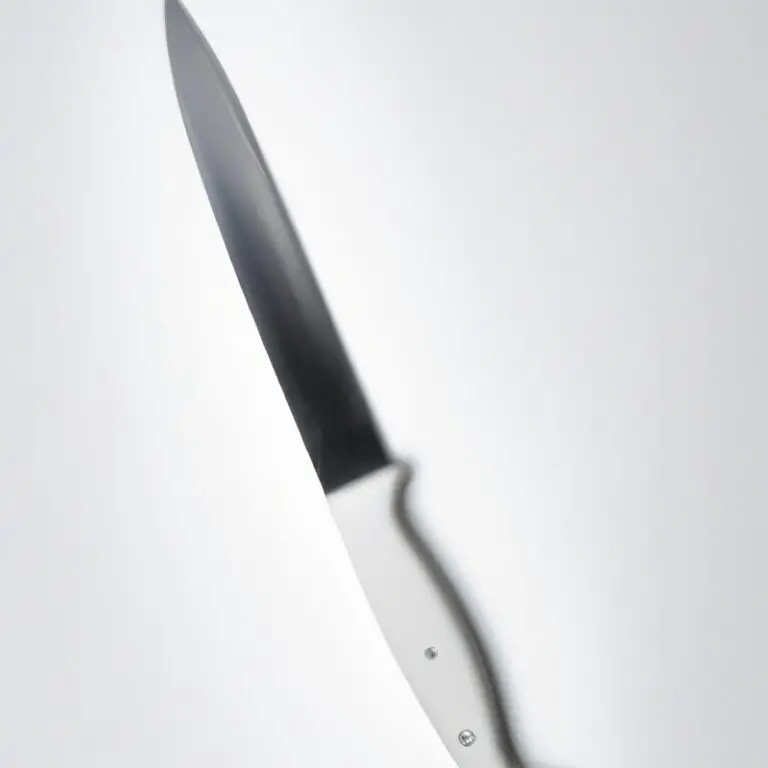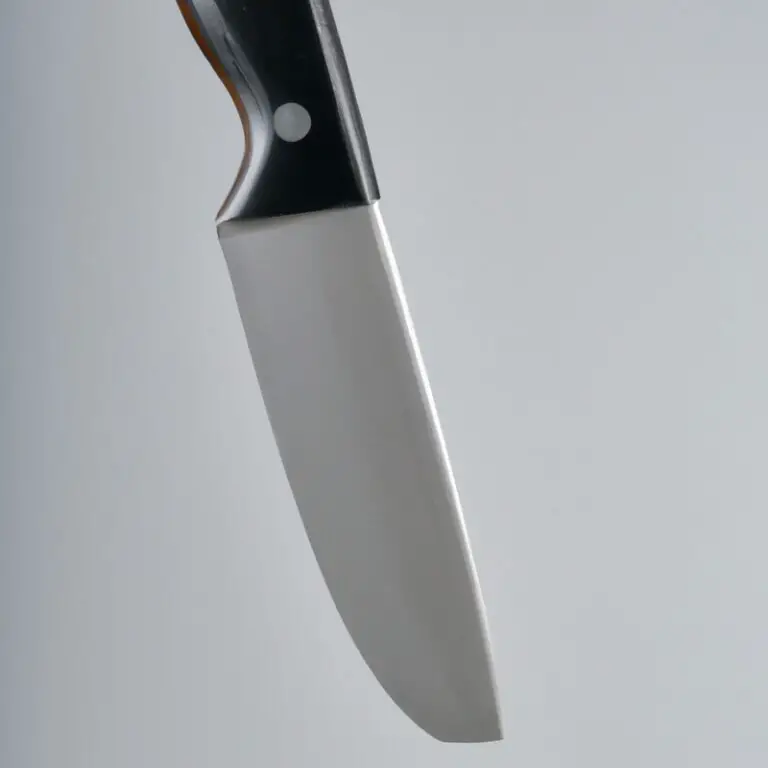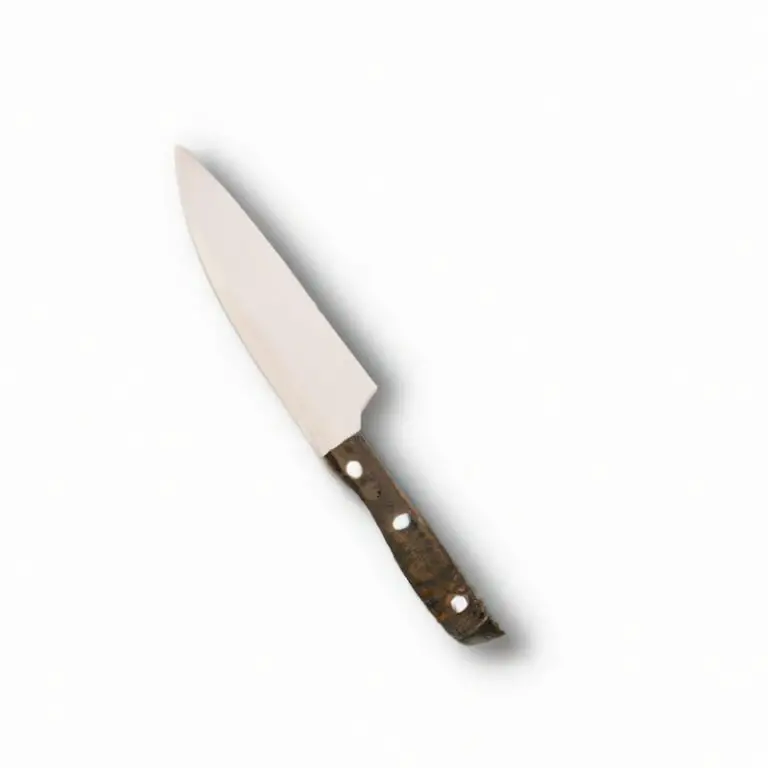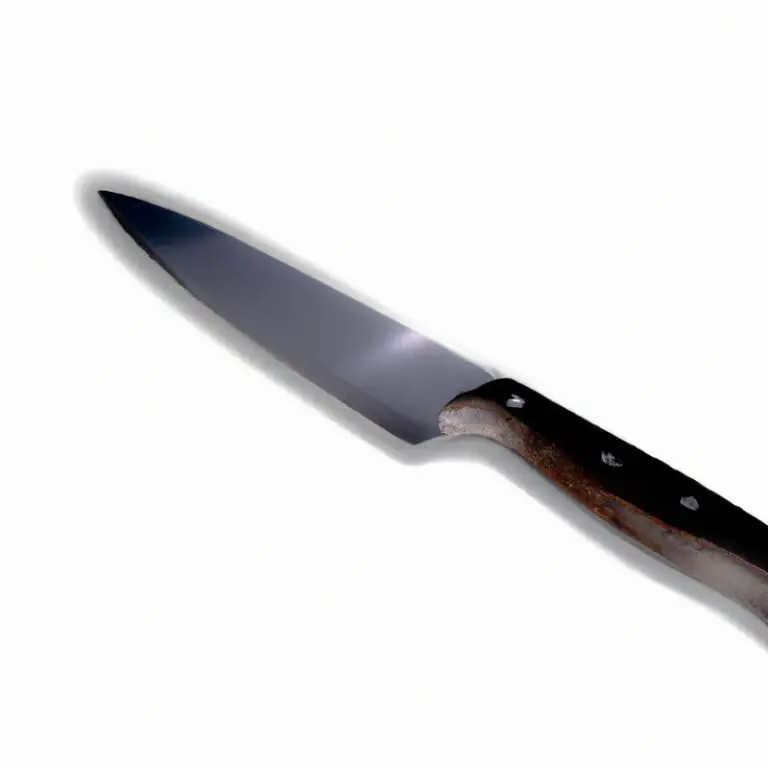What Is The Purpose Of a Finger Guard On a Chef Knife?
Key Takeaways:
- A finger guard on a chef knife provides protection against injury while slicing and dicing.
- The purpose of a finger guard is to prevent the user’s fingers from slipping onto the blade.
- Proper knife skills and grip techniques can also minimize the need for a finger guard.
- Finger guards can come in different shapes and sizes, so it’s important to choose one that fits your grip and cutting style.
Have you ever wondered why some chef knives come with a metal strip just above the handle? That, my friend, is a finger guard, and its purpose involves more than what meets the eye.
Plus, I’ll talk about why finger guards are a vital safety feature for professional chefs, and how they can select the perfect chef knife with a finger guard. So, buckle up and let’s dive into the anatomy and importance of a finger guard on a chef knife.
| Finger Guard | Purpose |
|---|---|
| 1. A metal or plastic piece attached to the handle of a chef knife | 1. Protects the fingers from slipping onto the cutting edge of the blade |
| 2. A curved shape that allows for better grip and control of the knife | 2. Prevents hand fatigue during extended periods of use |
| 3. Can also prevent the knife from slipping out of the hand | 3. Improves safety and reduces the risk of injury during use |
Anatomy of a chef’s knife: Understanding the parts of a knife, including the role of the blade and handle
To understand the purpose of a finger guard on a chef knife, it’s important to first understand the anatomy of a chef’s knife. The elements of a chef’s knife include a blade, handle, tang, bolster, and heel.
The blade is the most crucial part of the knife and is used for cutting, slicing, dicing, and chopping.
The sharpness and quality of the blade can significantly impact the knife’s performance in the kitchen. The handle is typically made of wood, plastic, or metal and provides a comfortable grip for the user.
The tang connects the blade and the handle and determines the overall balance of the knife.
The bolster is a thick piece of metal located between the blade and the handle, which provides additional support and balance. The heel is the part of the blade closest to the handle and is used for heavier cutting tasks such as chopping through bones.
Understanding the anatomy of a chef’s knife can help one choose the appropriate knife for their cutting needs and make informed decisions when selecting a knife with a finger guard.
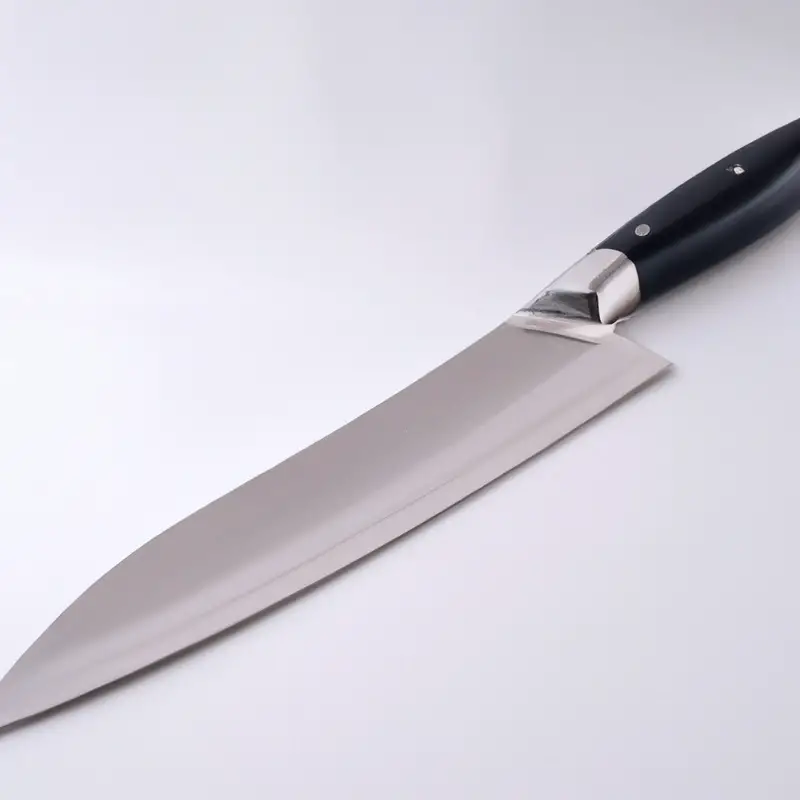
The importance of blade sharpness: How a sharp blade can prevent injuries and improve performance in the kitchen
A sharp blade is a necessary tool for any chef. Not only does it improve the efficiency of cutting, but it also prevents injuries.
A dull blade needs more force to cut, increasing the likelihood of the blade slipping, resulting in accidental cuts.
Furthermore, a dull blade can also damage the food you are preparing, interfering with the overall quality. A sharp blade, on the other hand, allows for clean and precise cuts.
Proper maintenance of the blade, with regular sharpening, will ensure that the blade stays sharp, reducing the risk of injuries and delivering optimal performance in the kitchen.
What is a finger guard: An explanation of the function and purpose of a finger guard in chef knives
A finger guard is a safety feature on a chef knife that acts as a barrier between the blade and the user’s fingers. The purpose of a finger guard is to prevent injury while using the knife, particularly when applying pressure or performing slicing motions.
Finger guards come in various shapes and sizes, from simple bumps to larger protruding guards that cover more of the blade.
They are typically made of materials such as plastic, wood, or metal and can be fixed or removable. While finger guards are not mandatory, they are recommended for beginner chefs who may not have the same level of experience and confidence as more seasoned chefs.
Finger guards also provide additional protection for those with smaller hands or shorter fingers, who may have less control over the knife.
In summary, a finger guard is a safety mechanism designed to protect the user’s fingers from the sharp blade of a chef knife and is commonly found on many knives.
Different styles of finger guards: A discussion of the various types of finger guards found on different chef knife models
Finger guards come in various styles and designs, depending on the knife model and manufacturer. Some chef knives have extended bolsters that serve as finger guards, while others have small notches or curves on the blade itself.
Some finger guards are made of the same material as the knife handle, while others are designed as separate pieces attached to the handle.
One common style of finger guard is the full bolster, which extends from the handle to the blade and provides a smooth transition from handle to blade. Another popular design is the partial bolster, which covers only a portion of the blade near the handle and allows for easier sharpening.
Curved finger guards, also known as choils, are found on some chef knives and allow for a more comfortable grip and better control.
Additionally, some knives feature a notch on the blade near the handle, known as a finger groove, to prevent fingers from slipping onto the sharp edge. It is important to consider the style of the finger guard when selecting a chef knife, as it can significantly impact the grip and handling of the knife.
Ultimately, the choice of finger guard style should be based on personal preference and the intended use of the knife.
Materials used for finger guards: A breakdown of the materials commonly used in finger guards for chef knives
Finger guards can be made of various materials, all of which serve to protect your fingers while using a chef knife. The most commonly used materials for finger guards are stainless steel, plastic, and silicone.
Stainless steel finger guards are durable and provide excellent protection, but may not be as comfortable to use as plastic and silicone options.
Plastic finger guards are lightweight and comfortable, but they may not be as sturdy as stainless steel. Silicone finger guards are flexible and soft, providing the most comfortable option, but they may not be as durable as metal or plastic.
When selecting a material for your finger guard, consider your personal preferences and the level of protection you need while using your chef knife.
Remember that a finger guard is only effective if it fits your hand properly and allows you to grip the knife securely.
How to identify a quality finger guard: A guide to identifying a robust, reliable finger guard for a durable chef knife
A quality finger guard for a chef knife should be strong, durable, and fit comfortably on the blade. Here are some factors to look for when identifying a quality finger guard:
- Material: A good finger guard should be made from a sturdy material, such as stainless steel or high-grade plastic.
- Fit: The finger guard should fit securely on the blade without any wiggle room. It should not slide or move as this can jeopardize the safety of the user.
- Size: The finger guard should be the right size for the knife. It should provide ample protection without being too bulky or interfering with the handling of the knife.
- Shape: Finger guards come in different shapes, and the ideal one should suit the user’s style of holding the knife. Chefs should try out different shapes to identify the one that works best for them.
- Compatibility: Ensure the finger guard is compatible with your chef knife model and brand.
Overall, a quality finger guard should be strong, durable, fit comfortably on the blade, and not interfere with the handling of the knife. By considering these factors, chefs can identify a reliable finger guard and ensure their safety while cooking.
Proper use and maintenance of a finger guard: Tips and tricks for utilizing finger guards correctly and caring for them to ensure longevity
Proper use and maintenance of a finger guard are essential to ensure its longevity and effectiveness in preventing injuries. Here are some tips and tricks for utilizing finger guards correctly and caring for them:
- Always position your fingers behind the finger guard while using the chef knife to avoid accidental cuts.
- Clean the finger guard regularly with soap and water to prevent the buildup of bacteria and food particles.
- Avoid using abrasive cleaners or steel wool as they can damage the finger guard.
- Dry the finger guard thoroughly before storing it to prevent rusting.
- Store the knife and the finger guard separately to prevent damage or scratches.
By following these simple tips, you can maintain the effectiveness of your finger guard and ensure that it lasts for a long time.
Alternatives to finger guards: A discussion of alternative safety measures for chefs who prefer not to utilize finger guards
While many professional chefs prefer to use finger guards on their knives for added safety, some may find them cumbersome or uncomfortable. Fortunately, there are alternative safety measures that can be taken to prevent injury while using chef knives.
One option is to use a cut-resistant glove on the non-knife hand.
These gloves are made from materials such as Kevlar and steel mesh and can protect against accidental cuts. However, they can also be restrictive and potentially impact a chef’s dexterity.
Another alternative is to practice proper hand placement and grip techniques when using a chef knife.
This includes using a firm grip on the handle and keeping fingers and thumbs away from the blade’s edge. In addition, some chefs may choose to use knives with shorter blades or rounded tips to decrease the risk of accidental cuts.
Regardless of which alternative safety measure is chosen, it’s important to prioritize safety in the kitchen and practice proper knife handling techniques.
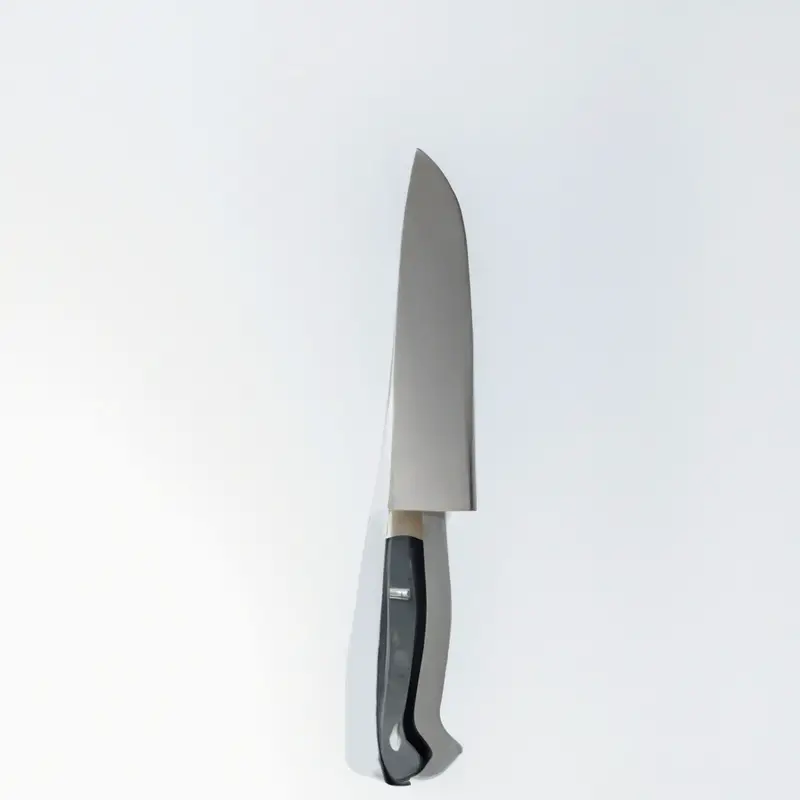
Finger guards in professional kitchens: An overview of the impact of finger guards in commercial restaurant settings
Finger guards are essential safety features in professional kitchens, especially in busy commercial restaurant settings. They prevent accidents that may occur while cutting food items by protecting the fingers from the sharp blade of the knife.
Chefs who use finger guards can work with more speed, efficiency, and safety, thereby reducing the risk of injuries.
The installation of finger guards is becoming a standard practice in commercial kitchens due to regulations and guidelines that emphasize the importance of kitchen safety. In conclusion, finger guards are a necessary safety precaution in professional kitchens as they play a crucial role in preventing injuries, boosting productivity, and ensuring overall safety.
How chefs can select the ideal knife with a finger guard: A guide to selecting the perfect chef knife with a finger guard based on individual preferences and needs
When selecting a chef knife with a finger guard, there are several factors to consider to ensure the knife meets individual preferences and needs. Firstly, it is essential to choose a knife that fits comfortably in the hand and has a weight and balance that feels comfortable.
The finger guard should be positioned correctly to provide a secure grip and protect fingers from the blade.
Additionally, consider the type of blade – straight or curved – and the length. A 6-8 inch blade is standard for most tasks, but a shorter or longer blade may be preferable depending on the user’s requirements.
The blade material should also be taken into account for durability and sharpness retention.
Finally, the finger guard material should be considered. Stainless steel or synthetic materials like plastic or composites are often used and can vary in grip and durability.
It is recommended to choose a robust and corrosion-resistant material for long-term use.
Overall, selecting the perfect chef knife with a finger guard requires consideration of individual preferences, such as comfort, blade type and length, and finger guard material. By taking these factors into account, chefs can select a knife that reduces the risk of injury and improves performance in the kitchen.
Final Verdict
A finger guard is a critical feature that all chefs should consider when selecting a quality chef knife. It not only protects against injuries but also enhances performance in the kitchen.
By understanding the anatomy of a knife, different styles and materials of finger guards, as well as their proper use and maintenance, chefs can identify reliable and durable options to suit their needs.
While some chefs may prefer alternative safety measures, the finger guard remains a popular choice in commercial kitchens. Ultimately, choosing the ideal chef knife with a finger guard requires careful consideration of individual preferences and needs.
As a trustworthy and knowledgeable resource, we encourage chefs to prioritize safety and performance in the kitchen by selecting a reliable chef knife with a quality finger guard.

